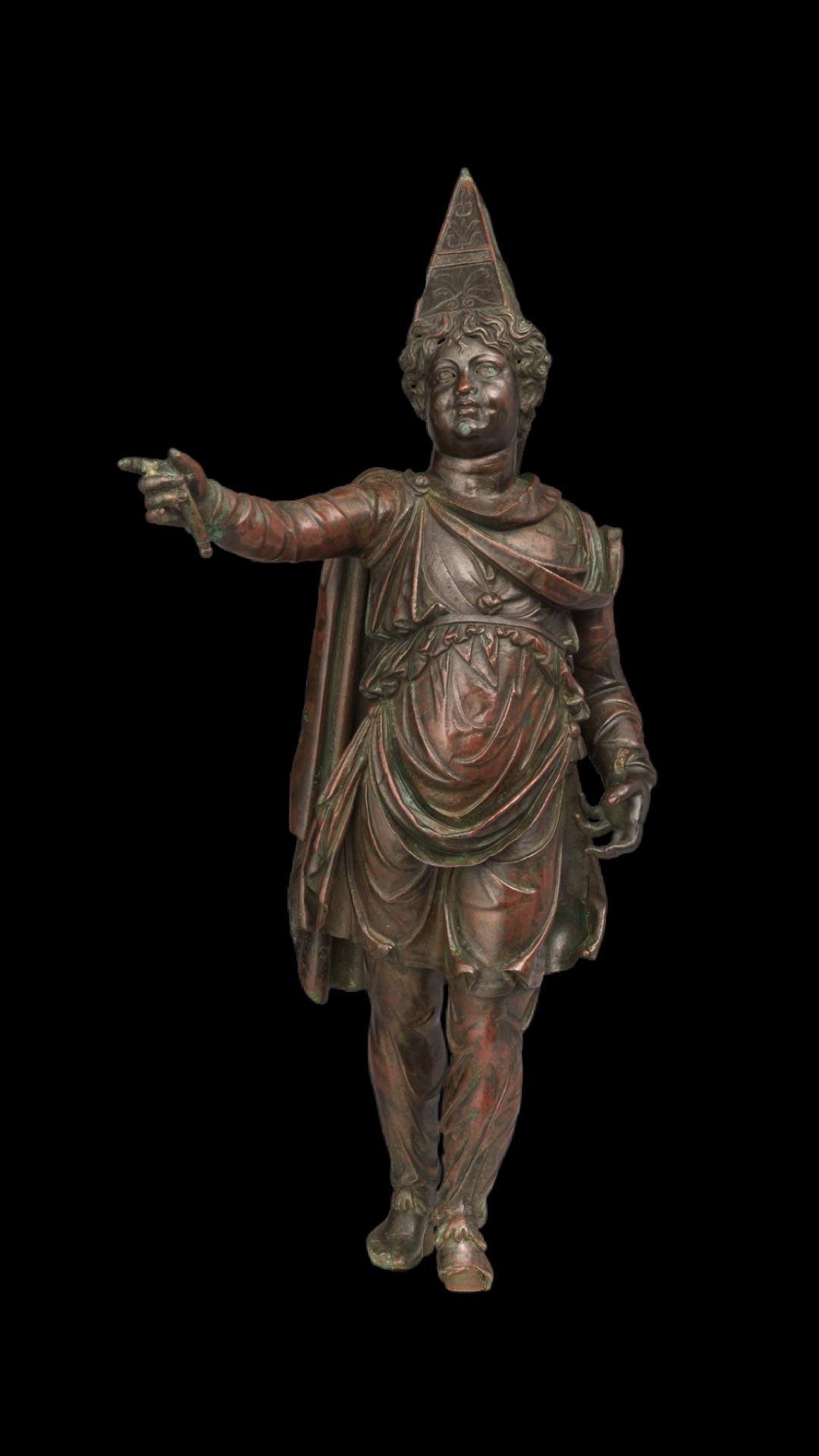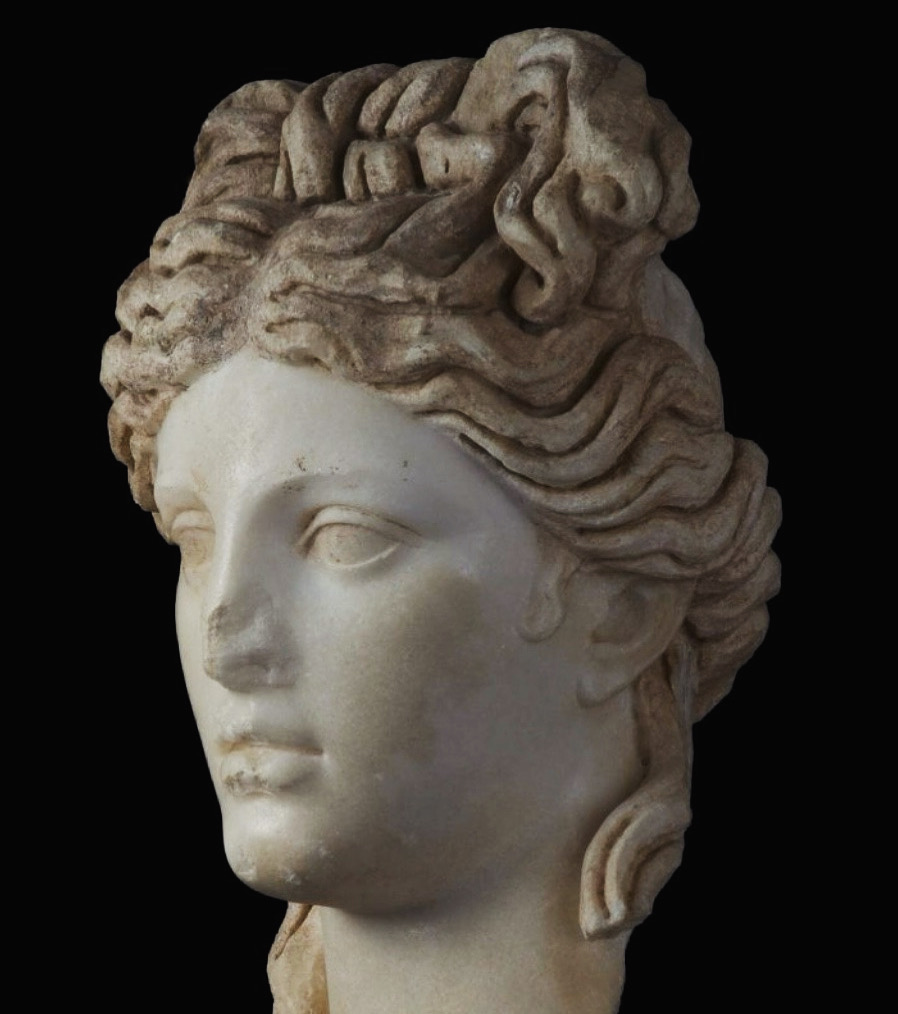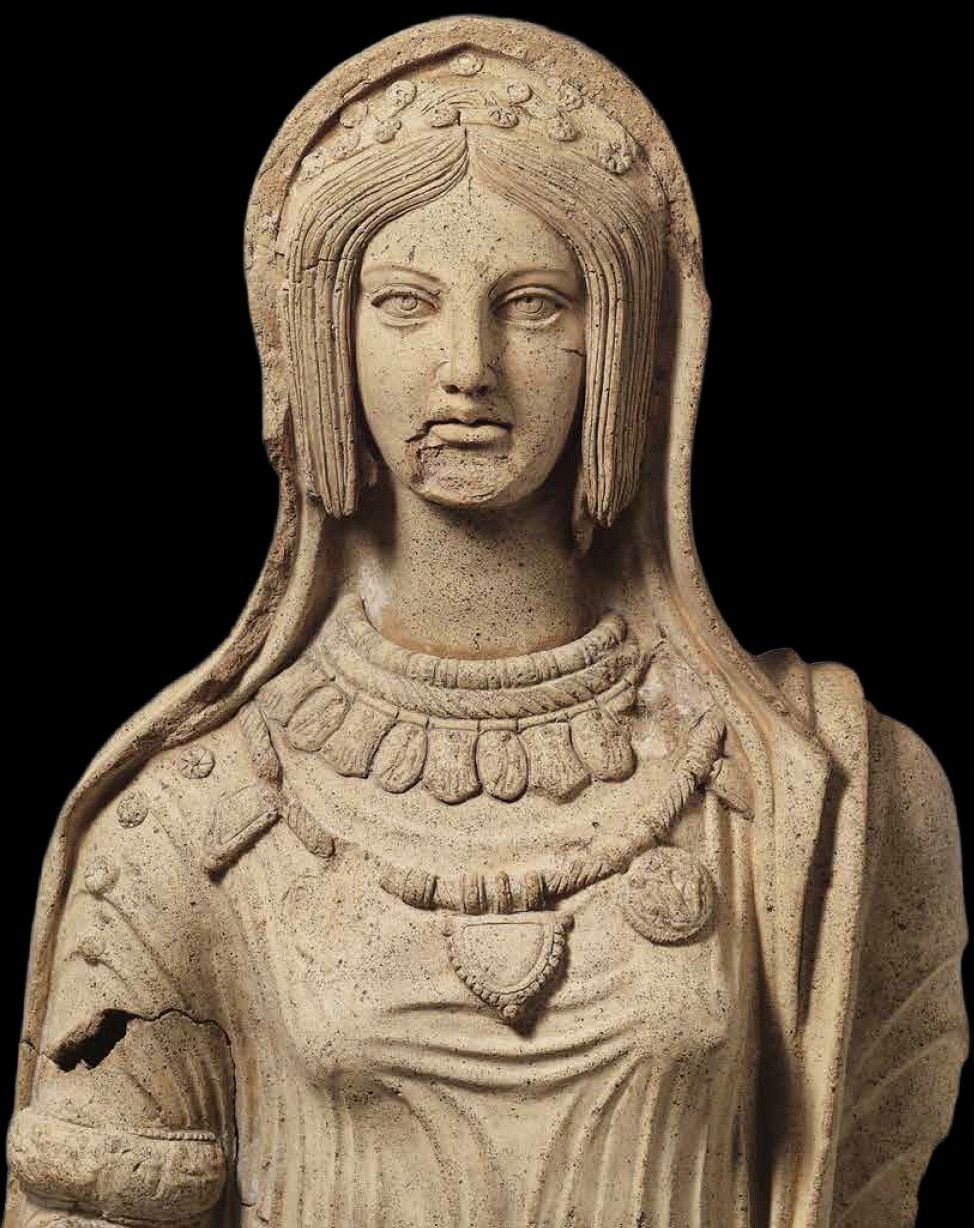Diabolically difficult to quarry and carve and imported at great expense from Egypt’s Eastern desert, by the 2nd century A.D. porphyry was inextricably linked with imperial grandeur with that purplish color becoming synonymous with royalty.
So much so that when Septimius Severus died on campaign in Britain his cremated remains were allegedly brought home in a porphyry hydria.
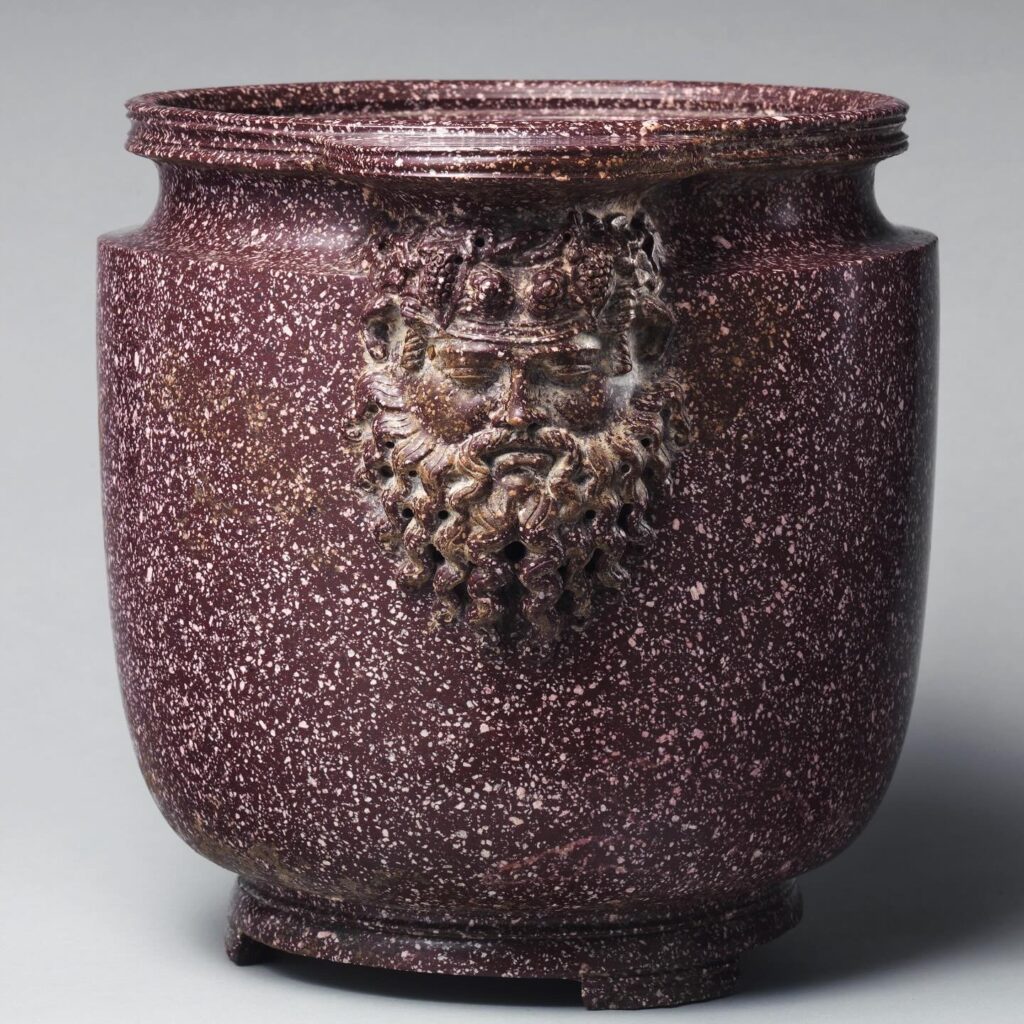
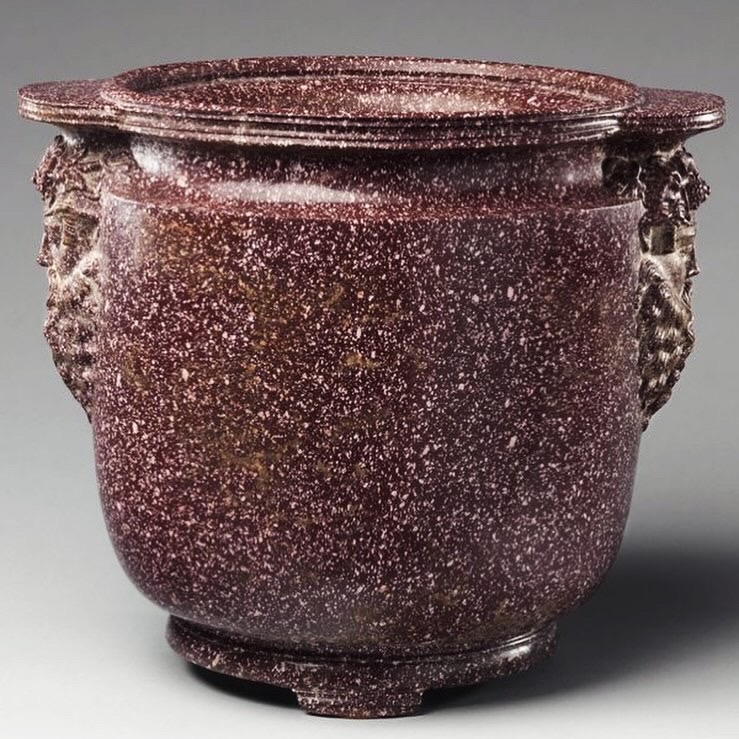

That vaunted vase has a certain romantic kinship with this one, an imposing bucket-shaped beauty acquired by the Met in 2014. Traces of the original polish remain, and at either side is the mask of luxuriantly bearded somewhat somnolent satyrs.
It is almost impossibly rare, and part of my interest in it is the delicious confusion surrounding it when it resurfaced on the art market in 2012, billed as 19th century. Thanks to the keen curatorial eye of Carlos Picón and generous trustees it was scooped up by the museum soon after, and now sits in court surrounded by other treasures of imperial Rome.

